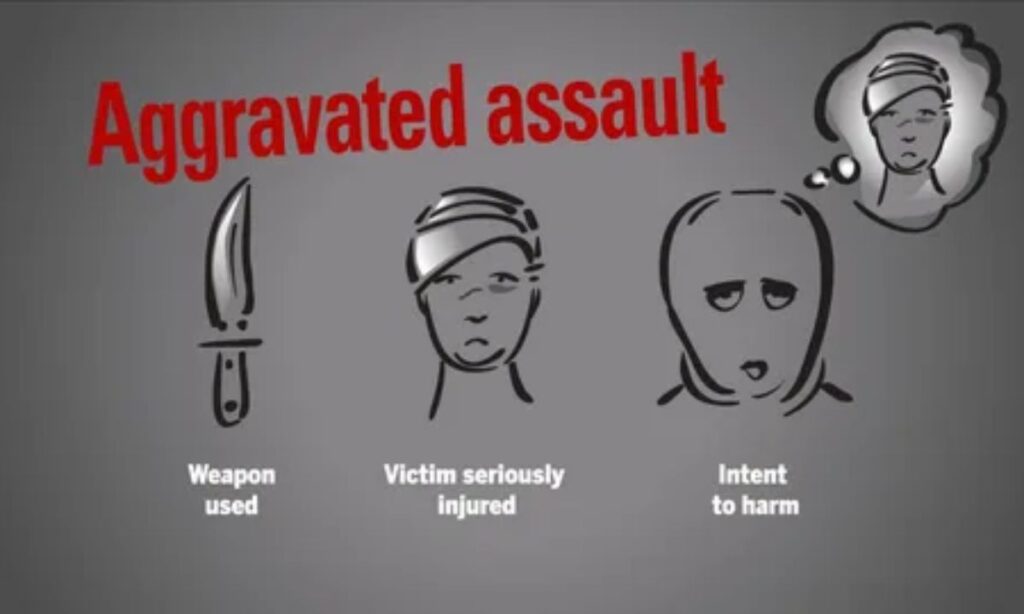Understanding crime statistics helps people make smart choices about where to live and visit. Dangerous cities across America face serious challenges with violent crime rates that concern residents and officials alike.
This analysis examines FBI data to identify which cities struggle most with criminal activity.Public safety varies dramatically between different urban areas in the United States. Some cities experience violence levels that far exceed national averages.
Crime analysis reveals patterns that help explain why certain metropolitan areas face greater challenges than others.The safety index for American cities depends on multiple factors including murder rate, robbery, rape, and aggravated assault statistics.
Law enforcement agencies track these criminal offenses to help communities understand their risk assessment profiles. Crime reporting provides the foundation for comparing cities and identifying trends.
The Most Dangerous Cities in the U.S.
Statistical data consistently shows certain cities ranking among America’s most dangerous places. These safety rankings consider violent crimes per 100k residents to provide fair comparisons across different population sizes. Crime trends indicate which cities struggle with persistent problems.
St. Louis, Missouri frequently tops dangerous city lists with extremely high crime rate per capita numbers. The city faces challenges across all major violent crime categories. FBI data shows murder and assault rates that significantly exceed national averages.
Detroit, Michigan remains among the most dangerous cities despite recent improvements. Crime statistics reveal ongoing struggles with criminal activity in many neighborhoods. Economic challenges contribute to elevated offense rates throughout the city.
Baltimore, Maryland consistently ranks in the top five most dangerous cities. Homicide statistics show the severity of violence affecting certain areas. Crime patterns indicate concentrated problems in specific districts while other areas remain relatively safer.
Memphis, Tennessee faces significant public safety challenges with high rates across multiple crime categories. Population density and economic factors contribute to elevated violence levels. Crime analysis shows particular struggles with property crimes alongside violent offenses.
READ THIS BLOG : Your Organization’s Data Cannot Be Pasted Here: How to Fix
Murder
Murder rate statistics provide the most serious indicator of urban danger. Homicide statistics reveal dramatic differences between cities, with some experiencing rates ten times higher than others. These numbers represent the ultimate measure of violent crime in communities.
St. Louis reports among the highest murder rates in America, with recent years showing 60-70 homicides per 100,000 residents. This murder rate represents nearly twenty times the national average. Crime reporting indicates concentrated violence in specific neighborhoods.

Baltimore struggles with homicide statistics that place it among the most dangerous cities nationally. Recent years have seen murder rates exceeding 50 per 100,000 residents. Law enforcement agencies focus resources on violence reduction strategies.
Detroit shows some improvement but maintains elevated murder rates around 40 per 100,000 residents. Crime trends indicate progress in certain areas while challenges persist in others. Community policing efforts target high-risk neighborhoods.
New Orleans historically faces high murder rates that fluctuate year to year. Statistical data often places the city among the top ten most dangerous nationwide. Tourism areas typically experience lower rates than residential neighborhoods.
Rape
Violent crime statistics include sexual assault as a serious category requiring careful analysis. Crime reporting for rape varies between jurisdictions due to different reporting practices. Victimization surveys often reveal higher actual rates than official statistics suggest.
Anchorage, Alaska reports among the highest rape rates according to FBI data. The city’s crime statistics significantly exceed national averages. Improved reporting practices may contribute to higher documented numbers.
Memphis consistently appears among cities with elevated sexual assault rates. Crime analysis shows these offenses occur alongside other forms of violent crime. Public safety initiatives focus on prevention and victim support services.
Detroit faces challenges with sexual assault rates that contribute to its dangerous city status. Criminal offenses in this category often correlate with other criminal activity patterns. Enhanced reporting systems help track actual incident rates.
Little Rock, Arkansas appears in discussions of cities with concerning rape statistics. Safety rankings include sexual assault rates as key indicators of overall urban danger. Law enforcement agencies work to improve response and prevention efforts.
Robbery
Robbery incidents represent a significant component of violent crime across American cities. These criminal offenses involve theft using force or threat, making them particularly concerning for residents. Crime patterns show robbery rates vary dramatically between locations.
Oakland, California consistently reports among the highest robbery rates nationwide. Statistical data shows rates several times higher than national averages. Commercial districts and transit areas experience concentrated activity.
Baltimore faces significant challenges with robbery incidents that contribute to its dangerous classification. Crime statistics reveal rates among the highest in the country. Risk assessment professionals consider these numbers when evaluating urban safety.
St. Louis reports elevated robbery rates alongside other violent crime challenges. FBI data shows these offenses occur throughout various neighborhoods. Security metrics include robbery as a key component of danger assessments.
Aggravated Assault
Aggravated assault represents the most common category of violent crime in most cities. These assault cases involve attacks intended to cause serious harm, often with weapons. Crime statistics show assault rates provide important insights into overall violence.
Detroit reports among the highest aggravated assault rates in America, with 1,500-2,000 incidents per 100,000 residents. Crime analysis shows these offenses occur across various neighborhoods. Different factors contribute to violence in different areas.

Memphis faces significant challenges with assault cases that heavily impact its dangerous city ranking. Statistical data reveals rates far exceeding national averages. Domestic violence and street altercations contribute significantly to these numbers.
Little Rock consistently appears among cities with elevated aggravated assault rates. Crime reporting shows violence rates that place it among the most dangerous nationwide. Law enforcement resources focus heavily on response and prevention.
25 Most Dangerous U.S. Cities
Safety rankings based on comprehensive analysis reveal America’s 25 most dangerous cities. These rankings consider violent crimes per 100k residents across all major categories. Crime rate per capita provides objective measures for comparison.
St. Louis.
Missouri consistently ranks as the most dangerous major city with elevated rates across all violent crime categories. Detroit, Michigan maintains dangerous status despite some recent improvements. Baltimore, Maryland ranks among the top five with particularly high homicide statistics.
Memphis.
Tennessee appears regularly in top ten lists with challenges across multiple crime categories. Kansas City, Missouri rounds out the top five most dangerous major cities. Little Rock, Arkansas consistently appears among the most dangerous relative to its size.
Oakland
California maintains dangerous status despite its location in a generally safer region. Stockton, California faces significant challenges that place it among dangerous cities. Cleveland, Ohio appears regularly in rankings based on FBI data analysis.
Buffalo
New York maintains dangerous status despite being in a generally safer state. Milwaukee, Wisconsin faces challenges across multiple violent crime categories. New Orleans, Louisiana experiences elevated rates that contribute to dangerous rankings.
Indianapolis.
Indiana appears among dangerous cities based on comprehensive analysis. Nashville, Tennessee maintains rankings despite rapid growth. Cincinnati, Ohio faces rates that place it among dangerous cities.
Atlanta.
Georgia appears in discussions based on crime statistics analysis. Tulsa, Oklahoma maintains dangerous status across multiple categories. Minneapolis, Minnesota faces elevated rates that contribute to rankings.
Albuquerque.
New Mexico appears among dangerous cities based on comprehensive assessment. Rochester, New York maintains rankings despite state location. Dayton, Ohio faces challenges that place it among dangerous cities.
READ THIS BLOG : The Best Home Security Systems in 2025: Recommended by Experts
Richmond.
Virginia appears in rankings based on analysis. Baton Rouge, Louisiana maintains dangerous status with elevated rates. Birmingham, Alabama faces challenges across multiple categories.
Jackson, Mississippi rounds out discussions of America’s most dangerous cities concerning trends across violent crime categories.
Frequently Asked question
What makes a city dangerous?
Crime rate per capita serves as the primary measurement, considering violent crimes per 100k residents. Economic conditions, unemployment, and poverty often correlate with higher criminal activity rates.
How are crime statistics measured?
FBI data comes from standardized reporting procedures through the Uniform Crime Reporting program. Law enforcement agencies submit data on criminal offenses to create comprehensive comparisons between cities.
Which regions have the most dangerous cities?
The South and Midwest contain many of America’s most dangerous cities. Metropolitan areas in these regions often struggle with elevated violent crime rates reflecting broader socioeconomic challenges.
Are dangerous cities getting safer?
Crime trends vary significantly between cities. Some show improvement while others face increasing challenges. Cities like New York have improved dramatically while others like St. Louis maintain high rates.
What can residents do to stay safe?
Understanding local crime patterns helps avoid high-risk areas and situations. Community involvement in neighborhood watch programs and cooperation with law enforcement strengthens overall public safety.
Conclusion
Understanding America’s most dangerous cities requires careful analysis of crime statistics and safety rankings. Cities like St. Louis, Detroit, Baltimore, Memphis, and Kansas City consistently face the highest violent crime rates nationwide. These communities struggle with elevated murder rates, aggravated assault, robbery, and other criminal offenses that significantly impact residents’ daily lives.
Crime analysis reveals that multiple factors contribute to elevated violence levels in urban areas. Economic conditions, population density, and available resources all influence crime rate per capita statistics. Metropolitan areas with concentrated poverty typically experience higher offense rates across multiple categories.

